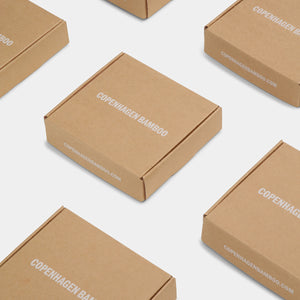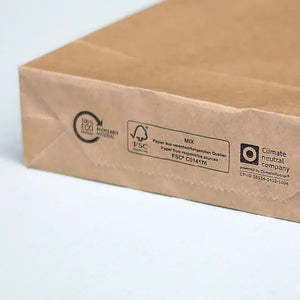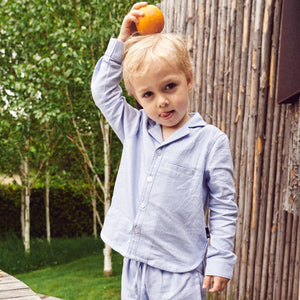
What packaging are the products you can buy in our webshop packaged in?
It varies from brand to brand, but they all have one thing in common: the packaging is carefully selected with the environment in mind. That's why the products are wrapped in recycled plastic, biodegradable plastic and/or cardboard. To protect the clothes as best as possible during transport - both from the manufacturers to us and from the webshop to you - the clothes are individually wrapped in garment bags.
What packaging do we use when we ship orders?
We use natural brown paper bags with self-adhesive closures and Danish-made cardboard boxes. To protect the goods as best as possible and fill the voids in the cardboard boxes, we use packaging filler made from 100% recycled paper.
If the original packaging is damaged, the goods are packed in garment bags made from 100% recycled plastic from Denmark. Right now, however, we are using cellophane bags until the last ones in our stock are used, then exclusively recycled plastic.

Which packaging is most environmentally friendly?
The most environmentally friendly packaging is the one that has the least impact on the environment. Here it is important to look at the entire process from raw materials to production, use and disposal. Therefore, it is about much more than just which materials are used. It is about how the packaging is produced, how far it has to be transported, how much packaging we use and how good we are at sorting our packaging waste correctly.
Plastic, paper or cardboard
Plastic has a much better durability than paper and cardboard, but it takes an infinitely long time for nature to break down plastic. Paper breaks down much faster and is therefore increasingly used for packaging. However, the protective benefits of plastic cannot always be replaced by paper and cardboard packaging. Therefore, it is crucial that we become better at collecting plastic so that it does not end up in nature or the ocean, but is reused or recycled.
Reuse or recycle
In terms of recyclability, plastic and paper are very similar. As long as they are kept separate by waste sorting, the materials can easily be recycled and used to make new products. Or they can be reused as the same type of product. But many institutions do not yet have the ability to keep the materials sufficiently separated, which is why a large part of the waste is instead burned and used to generate energy. From an environmental point of view, this is also completely okay, but it would be better to recycle or reuse even more.

Extended producer responsibility for packaging – and what does it mean for the consumer?
The extended producer responsibility for packaging means that from 1 January 2025, companies will be fully responsible for the packaging they bring to the market. They must register and report the expected amount of packaging, cover logistics and handling costs, and ensure that the packaging is sorted and treated correctly – even after you as a consumer have sorted the waste at home or at the recycling centre.
The purpose of extended producer responsibility is to reduce the amount of packaging. But it will also ensure that as much as possible is collected, reused and/or recycled, and increase companies' motivation to design better and more environmentally friendly packaging.
For you as a consumer, this means that the companies you do business with are obliged to inform you about how the packaging you receive your goods in should be sorted. The information can, for example, be on the packaging itself, or shared via information campaigns.

